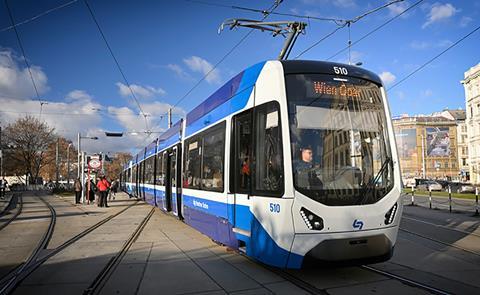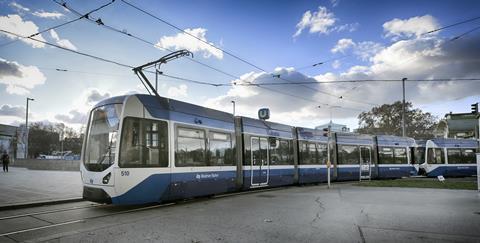
AUSTRIA: ‘Accessibility, air-conditioning and more seats than before are just a few of the major improvements’, said Wiener Lokalbahnen Managing Director Monika Unterholzner at a presentation of the Alstom light rail vehicles which are entering service on the Badner Bahn inter-urban light rail line. ‘The new vehicle fulfils our passengers’ wishes’.

In December 2018 Wiener Lokalbahnen awarded what was then Bombardier Transportation a €93m contract to supply 18 TW500 bidirectional low-floor LRVs and provide 24 years of maintenance, with an option for further eight years.
The first was delivered in autumn 2021, and approval for operation was obtained in December 2022. So far 15 have been delivered, and all 18 are expected to be in use this spring.
The contract included options to order up to 16 more, and Wiener Lokalbahnen has told Metro Report International that it had placed a firm order for a further 12, leaving four still to order.

Wien City Councillor for Public Transport Peter Hanke said the locally-manufactured LRVs ‘herald a new era for the Badner Bahn’, making it ‘even more attractive as an environmentally friendly connection between the city and the surrounding area’.
The interiors were developed in partnership with industrial design agency Moodley to meet the needs of different types of passenger, including wheelchair users and these with pushchairs. Facilities included air-conditioning, CCTV, wi-fi, power sockets and USB charging points. Sustainability features include regenerative braking, LED lighting and double-glazed windows to retain heat in winter and protection against the sun in summer.
The low-floor TW500 cars will replace high-floor TW100 cars produced by SGP in 1979-93, although some will be retained as a backup for several years.
Ridership on the 27 km line which runs from Wien Oper to Baden Josefsplatz totalled 12·6 million passengers in 2022. The Wien end of the route uses city transport operator Wiener Linien’s tramway infrastructure including 600 V DC electrification, while south of Schedifkaplatz the voltage rises to 850 V DC.


